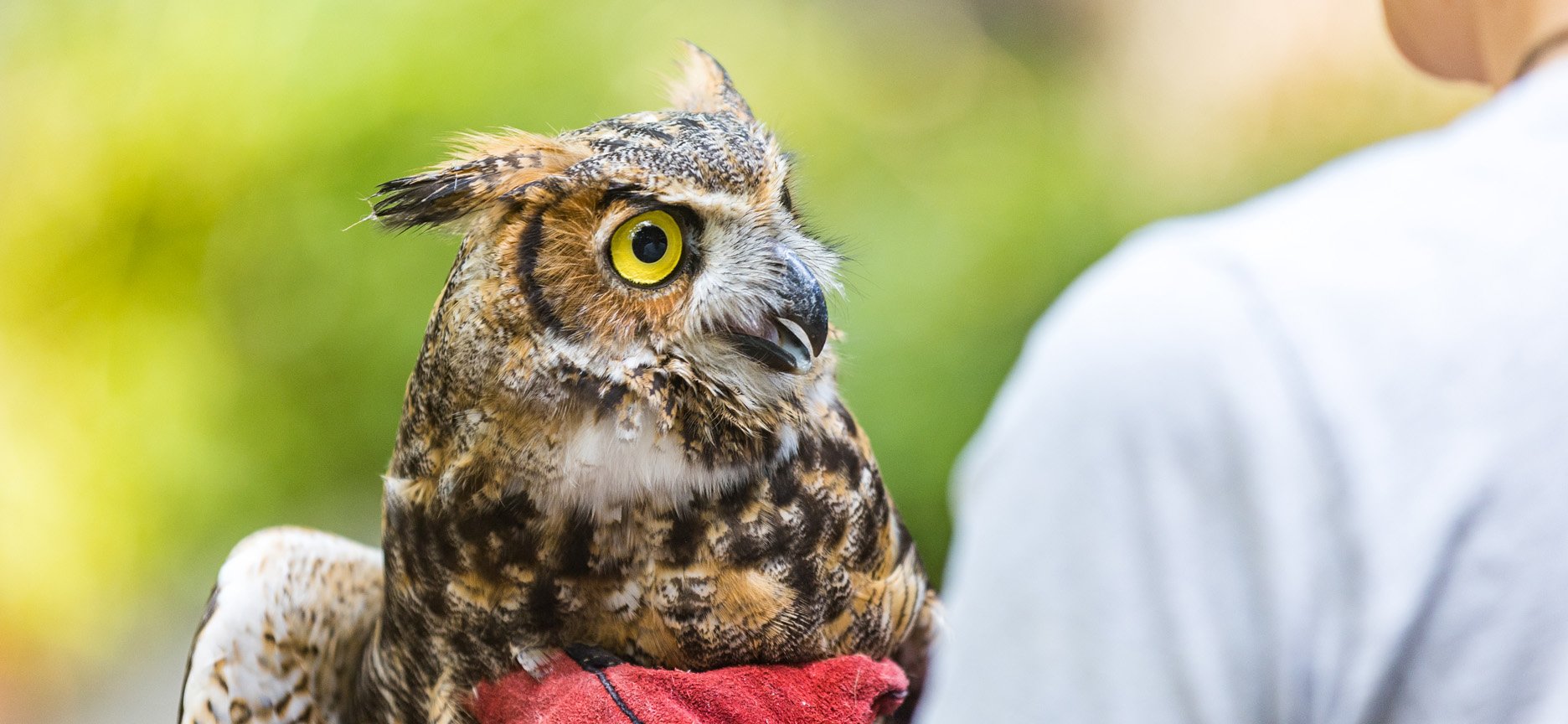Understanding the Requirement for Animal Control Burlington in Urban Environments
Wiki Article
The Function of Humane Wildlife Removal in Protecting Citizen Ecosystems
Humane wildlife elimination is not just an honest consideration however a critical element in securing regional communities. By prioritizing non-lethal methods, it addresses the fragile balance between human development and wildlife habitat conservation. This approach not only minimizes disputes however likewise ensures the sustainability of biodiversity. Yet, the efficiency of these approaches warrants better exam, specifically in metropolitan setups where human-wildlife communications are increasingly complicated. As we contemplate the ramifications of our approaches and their effect on environmental harmony, one need to question how these techniques can be optimized to foster a more cooperative connection with nature.Understanding Human-Wildlife Conflicts
Human-wildlife conflicts often arise when the natural habitats of animals intersect with human activities, resulting in competition for resources and room. As urbanization and agricultural development remain to intrude upon wildlife regions, pets such as coyotes, raccoons, and deer locate themselves in closer proximity to human populations. This distance can result in detrimental effects on both wild animals and people, as animals may cause damage to crops, framework, and individual property while human beings may accidentally damage wildlife via environment damage and other anthropogenic pressures.The complexity of these conflicts comes from a selection of aspects. Adjustments in land usage, environment modification, and the fragmentation of communities frequently compel wildlife to adapt to new environments, occasionally leading them right into commercial or property areas. Furthermore, the schedule of human-generated food resources, such as waste and pet dog food, can attract wildlife to human settlements, aggravating interactions and possible disputes.
Addressing human-wildlife disputes requires a nuanced understanding of animal behavior, eco-friendly dynamics, and socio-economic considerations. By studying these policymakers, communications and conservationists can establish strategies that aim to mitigate problems while protecting biodiversity and maintaining ecological equilibrium. The objective is to promote conjunction and reduce damaging effects on both human communities and wildlife populaces.
Relevance of Non-Lethal Techniques
Mitigating human-wildlife conflicts necessitates methods that focus on the wellness of both pets and people. Non-lethal techniques of wild animals elimination embody this values by offering options that stop injury to wild animals while resolving human problems. These techniques include exemption methods, environment modification, and the use of deterrents to dissuade wildlife from getting in human environments (burlington animal control). By utilizing such methods, we can manage wildlife communications without turning to lethal actions, consequently protecting animal populaces and reducing honest concerns associated with murder.Non-lethal techniques are crucial in keeping ecological equilibrium. They guarantee that species remain to satisfy their roles within environments, such as managing bug populaces or pollinating plants. These methods typically show more effective in the lengthy term, as eliminating individual pets can create a space that is swiftly filled by various other participants of the varieties or different types entirely. This can result in a cycle of recurring elimination efforts, whereas non-lethal deterrents deal with the origin causes of wildlife presence.
Furthermore, non-lethal strategies foster coexistence by enlightening the public regarding wild animals behavior and encouraging unified living techniques. This recognition can cause extra lasting human-wildlife interactions, eventually protecting both neighborhood passions and animal welfare.
Advantages for Biodiversity
When non-lethal wildlife elimination approaches are utilized, they add dramatically to biodiversity preservation. By guaranteeing the risk-free relocation of animals rather than their removal, these methods maintain eco-friendly equilibrium and safeguard the stability of ecosystems.have a peek at these guys

In addition, these methods cultivate conjunction in between human beings and wild animals, minimizing negative communications and protecting the abundant tapestry of life that defines biodiverse areas. This strategy motivates a much deeper understanding and respect for wildlife, promoting community support for conservation initiatives. Eventually, humane wild animals removal is an important element in protecting biodiversity, making sure communities stay dynamic and practical for future generations.
Strategies for Reliable Removal
Executing efficient techniques for humane wildlife elimination requires a comprehensive understanding of animal habits and habitat demands. This knowledge works as the foundation for developing techniques that make sure the safe and honest moving of wildlife. One main method entails carrying out extensive evaluations of the afflicted area to recognize the varieties existing and the details obstacles they posture. This analysis aids in developing tailored techniques that reduce stress and harm to the pets.Another crucial strategy is employing exclusion strategies, which focus on sealing entry points to avoid animals my site from returning to frameworks. This approach not just addresses the instant issue but additionally functions as a lasting service, reducing future problems between people and wildlife. In addition, using safe deterrents and repellents can encourage animals to vacate locations willingly, enhancing various other removal initiatives.
Capture and relocation should always be a last resort, employed only when pets position a straight threat or are not able to exit on their own. In such cases, using gentle traps and ensuring the release of pets in ideal habitats are important to guarding their well-being. Partnership with wild animals specialists and adherence to legal regulations even more boost the performance of these techniques.

Promoting Conjunction in Urban Locations
Advertising conjunction in metropolitan areas calls for a multifaceted strategy that stabilizes human advancement with the requirements of regional wildlife. Urban policymakers and planners have to integrate environment-friendly spaces, such as parks and wild animals passages, right into city designs to supply environments for native types. burlington animal control.Education and learning and understanding campaigns are important in fostering a society of coexistence. Citizens need to recognize the relevance of wildlife and the duty they play in regional environments. Workshops and informative sessions can furnish neighborhoods with knowledge on how to decrease disputes, such as safeguarding garbage and using gentle deterrents to stop wild animals intrusion.
In addition, technology can play a considerable role in promoting conjunction. Using wildlife monitoring systems, for instance, can assist track animal movements and notify metropolitan planning decisions. Collaborations in between ecological companies, regional federal governments, and neighborhood groups can even more enhance these initiatives, ensuring that city growth progresses sustainably while respecting the environmental equilibrium.
Verdict
Humane wild animals removal is vital for maintaining ecological equilibrium and biodiversity by employing non-lethal approaches that minimize injury to animal populations. Inevitably, advertising coexistence in urban areas fosters a harmonious partnership in between human beings and the all-natural atmosphere, ensuring lasting environments for future generations.As urbanization and agricultural growth continue to elbow in upon wildlife areas, pets such as raccoons, coyotes, and deer find themselves in closer closeness to human populaces. Non-lethal approaches of wildlife removal embody this ethos by supplying options that stop harm to wild animals while attending to human issues. By employing such methods, we can take care of wildlife communications without resorting to lethal measures, therefore preserving animal populaces and decreasing honest concerns associated with killing.
Applying efficient strategies for gentle wild animals removal needs a detailed understanding of animal actions and habitat needs.Humane wildlife removal is crucial for preserving eco-friendly equilibrium and biodiversity by employing non-lethal techniques that reduce damage to animal populations.
Report this wiki page